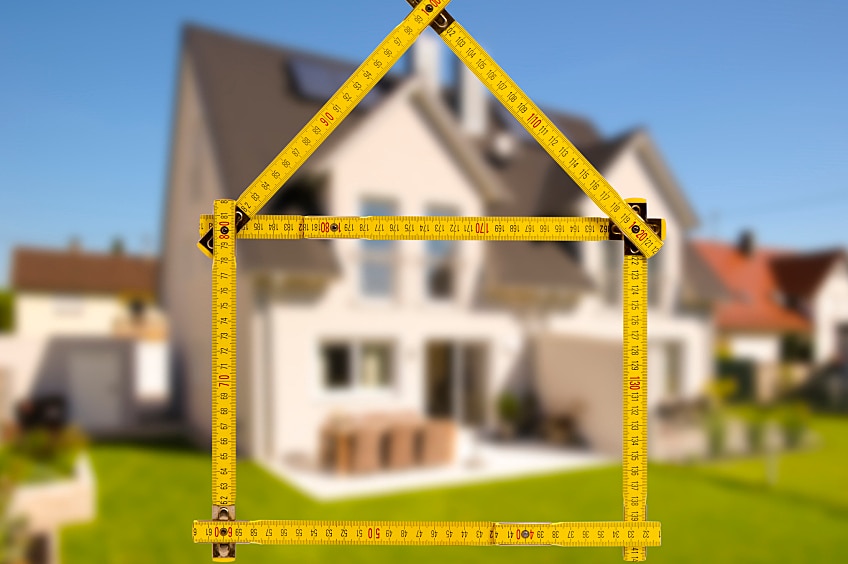Just 15 years ago, there was only one way get a roof measurement—climb a ladder and run a tape measure. Now, with high-resolution aerial imagery and other new technology, contractors have multiple options for securing measurements. Here is a look at the pros and cons of each method.
Measuring by Hand
Getting a roof measurement by hand is the tried-and-true method trusted by roofing contractors for years. By measuring themselves, a contractor can be confident in the numbers and know that the measurements will be completely accurate. This means that orders for materials will be more precise and there will be less waste on the job.
On the other hand, manually obtaining a roof measurement also comes with drawbacks, some of which might outweigh the benefits. The first one is time. Manual roof measurement requires the contractor or sales representative to drive to the property, climb onto the roof, and potentially spend up to an hour gathering measurements, depending on the roof's complexity.
The second concern is safety. Climbing onto the roof requires contractors to carry equipment—including a tape measure, pitch gauge, tablet and pen—up a ladder and onto the roof. While the contractor is focused on capturing measurements, it's possible to lose sight of key safety precautions such as the location of fall hazards and leading edges. Physically walking on the roof can also cause damage and loss of granules.
Aerial Measurement Technology
Aerial measurement technology has been available for close to 15 years, and it offers some significant advantages for roofing contractors. This technology uses high-resolution aerial imagery combined with computer algorithms to create a 3D model of the property. It extracts measurements that may have at an accuracy rate of 95% or higher.
Contractors benefit from the time savings that come with not having to visit the property, as well as the added safety: it's possible to gather the measurement with no climbing. In insurance or claim situations, having a third-party aerial measurement report may help resolve any disagreement between the insurance adjuster and the contractor over measurements and material amounts required for the job.
Using this method of remote measuring also enables roofing contractors to hire professional salespeople, who can focus on selling rather than learning how to measure a roof. They can use the technology to capture measurements accurately and reassure homeowners that your company uses the latest tools and methods available.
However, aerial measurement technology has its disadvantages. One is cost: depending on the size and complexity of the roof, the measurement report can cost $50 or more. Report turnaround time can also be a turnoff for contractors. In some cases, especially during high-volume situations such as following a hailstorm, the wait for turnaround may reach 24 hours or more. In a world where consumers want instant gratification, delaying an estimate by 24 hours could result in losing the job.
GAF QuickMeasure
The experts at GAF have considered the pros and cons that come with manual roof measurement and aerial measurement technology and partnered with experts in the industry to develop a new solution, GAF QuickMeasure.
GAF QuickMeasure harnesses the power of aerial roofing measurements and gives it the speed that consumers expect, now with 3D modeling. Roof measurements are delivered within one hour for single-family homes and start as low as $18 per report. Pricing varies based on your level of certification with GAF.
The reports are warranted to be 95% accurate, and contractors can enjoy the safety and time-saving benefits that come with remote measurements. Homeowners appreciate the prompt response and the assurance that their estimate is accurate.
Because GAF QuickMeasure reports combine the pros of both alternative methods, the cons are fewer and further between. However, some contractors may scoff at the 95% accuracy rate, being more confident in their ability to obtain a 100% accurate roof measurement by hand. Chris Townsend of Townsend Roofing decided to test out the accuracy on his own, saying, "I submitted a couple of addresses that we recently measured on site to 'test' it. The report was accurate, quick, and cheap!"
Contractors who are using the GAF QuickMeasure reports say that the convenience of ordering from their phones, the branding and professionalism of the report, and the ability to respond quickly all create opportunities to help advance their businesses.
Time, accuracy, and safety are of the essence for contractors. While measuring by hand still has some merit, today's technology allows for safer, faster, and highly accurate measurements that can allow your roofing business to better meet the needs of your clients.

